I’ve lived in standard stick-built homes most of my life – as, no doubt, have most of you. I still do, when I’m stateside. But, back in the 90s I heard about strawbale houses, and since then I’ve always wanted to build one. By the way, if you’re thinking about the tale of the Three Little Pigs, where the wolf blows down the house, you can relax – it’s not the same at all.
Anyway, not knowing how to go about it, I visited a California architect who built the state’s first approved strawbale house near Bishop (he then built one for himself, too). Then I moved to Ponderosa Village, an “intentional community” in Washington state. My initial incentive to go there was a strawbale housebuilding workshop they were running; at the time Ponderosa had a variety of other housebuilding methods in use, including rammed earth, earth-bermed, geodesic domes and log cabins, but nobody had built in strawbale yet.
What I was looking for was a housebuilding method that I could afford, that was simple enough for a novice builder (although I am pretty handy) and durable enough to last a lifetime or more. The thing is, it’s also great from a prepping point of view.
Related: Straw Bale Gardening
It sounds unlikely, but a strawbale house has the potential to stand up well to bombs, earthquakes, fire and even fallout. Here’s why:
- The walls are thick – two and a half feet – and sit on an equally wide concrete foundation to give them stability.
- The bales are stuccoed on the outside and inside, making them impervious to heat – even the heat from a blowtorch won’t make it through.
- The bales are pinned to the foundation and extend all the way to the roof line, where they’re pinned again.
These are very durable structures – yet building inspectors, who often impose draconian (bordering on fascistic) standards on owner-builders, don’t always “get” strawbale houses. Even if they do understand the concept there usually aren’t any codes for it.
In my case the local building official (there was only one) rejected my plans, which had been drawn up by a Seattle-based professional architect – a guy who even helped to “green” the White House. I had dozens of volunteer builders lined up for my job, and then suddenly I didn’t have clearance to go ahead.
⇒ How to Build a Log-House Like The Pioneers
However, in the northern Baja California there’s a community that, today, has almost 100 strawbale homes – including some really luxurious ones. It was a new resort, called El Dorado Ranch (eldoradoranch.com) and I had acquired a plot there with the idea of building on it some day.
My next step was to haul most of the components of my abandoned Washington house down to El Dorado Ranch in a motor home, minus the bales, of course – those ended up rotting away on my former property that I was, in effect, swindled out of by the building officer.
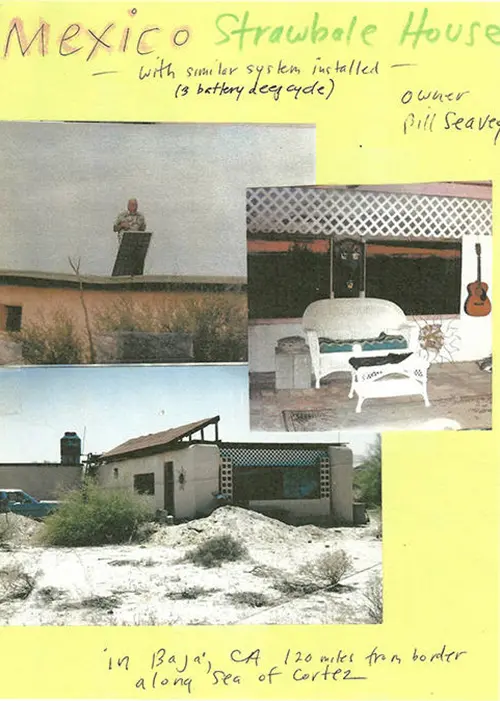
Building In Strawbale
It was different down in Baja California. The locals had begun to embrace strawbale construction, so permitting for my house was almost instantaneous. I made a few modifications from the previous structure, and scaled it back to 900 square feet, then got started. As far as I know it was the second strawbale house at El Dorado, and it turned out to be perfect for the local environment. It did take me years to build in the end, and is still a little rough in places, because I was broke.
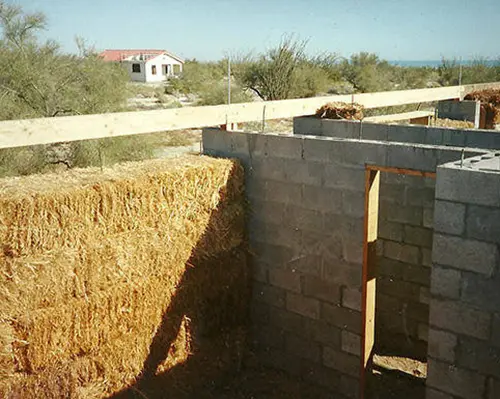
There are two main methods of strawbale construction. The first is where the bales are simply stacked on top of each other and support a roof; I think it was planning to do it this way that finally killed my application in Washington. Then there’s the other way, using corner beams to support the roof. I decided to take this approach in Mexico, using corner beams and a 6×4 beam across the living room (the largest space) to support a flat roof. This method also uses interior walls of painted concrete block, which gives the roof more support. Doors and windows are framed and cut out of the bales.
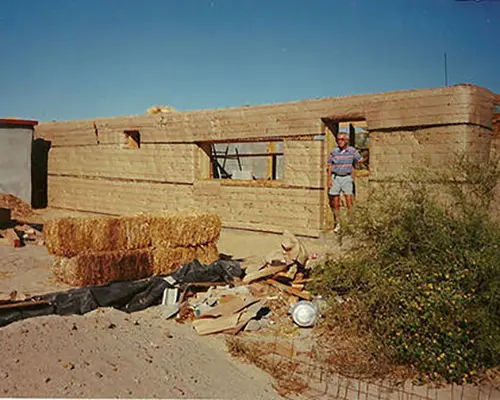
This is a comfortable house to live in. As long as you can draw in cool air at night the insulation of the bales will keep the temperature manageable. Air conditioning in summer will make a big difference where I am; the straw will reduce the amount of heat getting in from outside. To create a cooler space for supplies I dug myself a small basement with a backhoe.
Related: 6 Cheap DIY Projects You Can Only Do This Summer
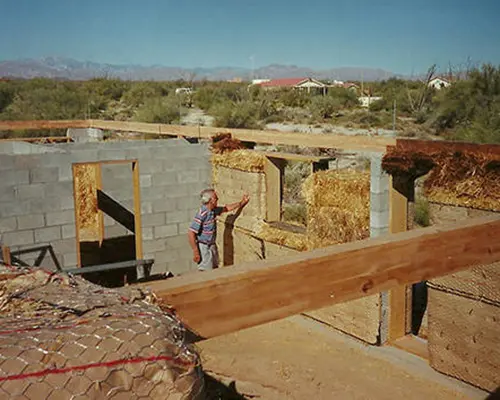
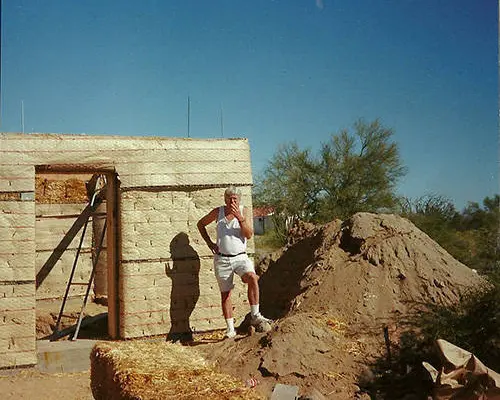
However, I do consider myself a pioneer for having built this type of house in this part of Mexico. Since the 90s the resort has expanded greatly, and this part of Mexico is the only place a gringo can actually own so far (and there’s Remax and Century 21 in San Felipe, the nearby fishing village). The resort is now so large that the town’s commercial focus has moved 15 miles north to provide services to the roughly 1,000 gringos who live at the resort full time, and several thousand more part-timers. For example there’s a medical clinic on the highway just a mile and a half from my “rural” lot. There’s a new aquatic center the same distance away, and a golf course that runs actual tournaments.
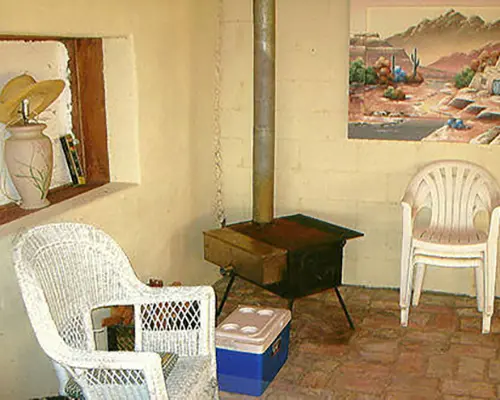
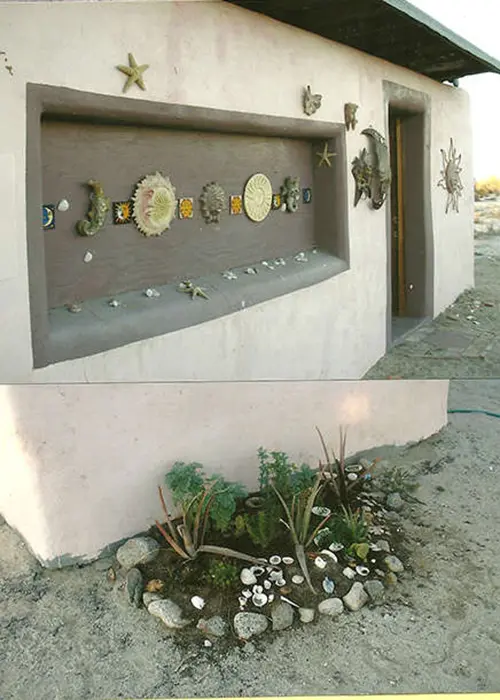
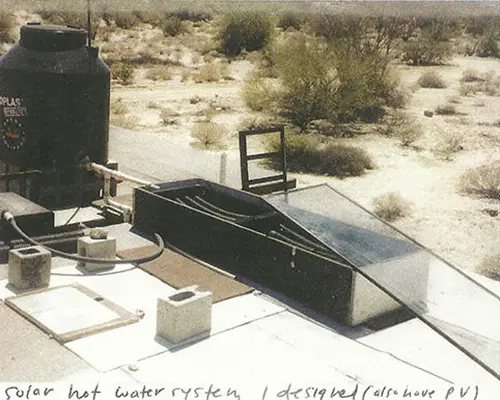
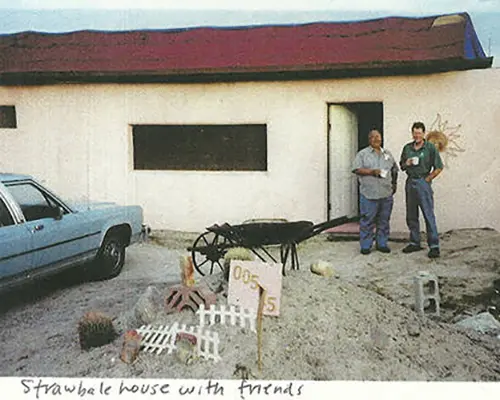
Poor Man’s Hawaii
One reason for the area’s popularity is cost. I estimate that my 900 square foot house cost $25,000 to build, and the 80×90 lot it’s built on cost about $10,000 with a septic tank installed. Now it’s finished, annual taxes run to about $630 (that’s not a typo). I have a small solar electricity system, water tanks on the adjacent storage building (which is also strawbale) and vistas you wouldn’t believe – yes, you can see the warm waters of the Sea of Cortez from some of my windows. It’s quiet, with few neighbors close by, and I can get a meal in a local restaurant for as little as $5. I call it a Poor Man’s Hawaii.
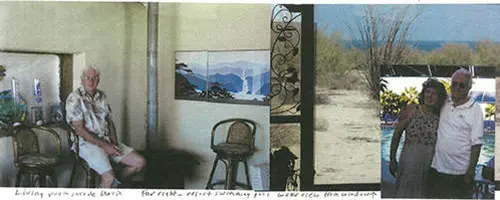
A few years ago I used to run a budget touring program to El Dorado Ranch, showing half a dozen people at a time this beautiful part of Mexico. It’s safe here, the roads are good and the cost of living is very low. The people are terrific, and if you want any building work done you can hire skilled laborers for about $15 a day. Most speak some English, although I usually get by in my pidgin Spanish.
Related: Straw Bale Gardening Mistakes
I wish I could answer everyone who has questions but if you are sincerely interested in accompanying me on a spring tour, email billseavey@gmail.com. My website is retirementpossibilities.net. There is a book there on other low cost alternative building methods, which people really need to know about.
The cost of housing in the USA is just ridiculous, but strawbale will give you a big cost saving – especially if you build in Mexico like I did. There are a lot of benefits in having a home, even a second home, down here. For a start, it’s far away from all the likely targets!
This article first appeared on Ask A Prepper.
You may also like:
How to Survive a Summer Power Outage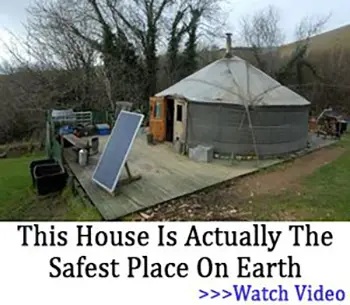
How to Build a Native American Subterranean Roundhouse in Your Backyard (Video)
50 Tips From the Great Depression
How To Build a Solar Heater from BEER cans for FREE
Survival DIY Projects You Can Start on Your Property Right Now

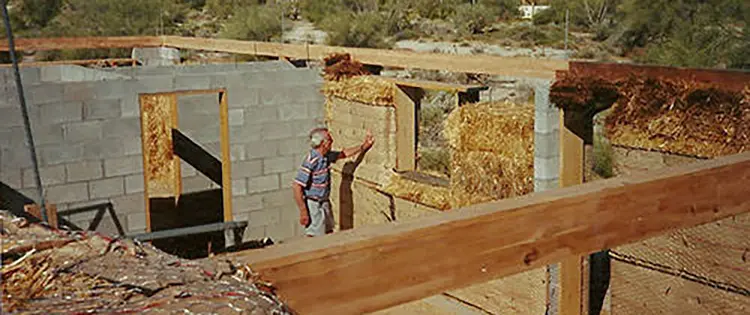













Thank you for the article. For those reading this he’s right about Baja California (which is a little confusing because it is in Mexico). I recently went on a mission trip 250 south of the border. The people were fabulous, the cost very economical and where I was the climate is 50s – 70s year round. Two miles to the Pacific where the water is pretty cool/cold.
The sun is the Arizona but nowhere near the temps. No humidity to speak of definitely made my list of retirement places.
What do you cover the hay in